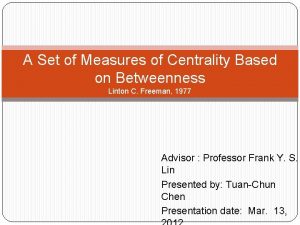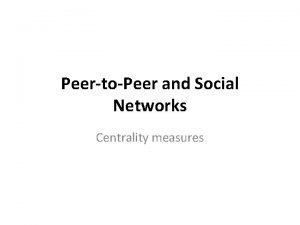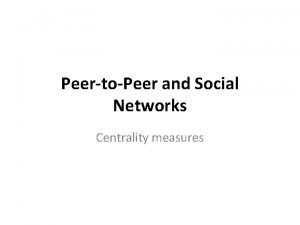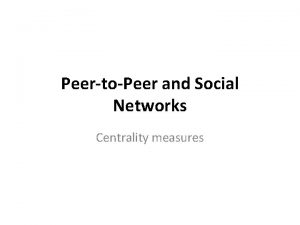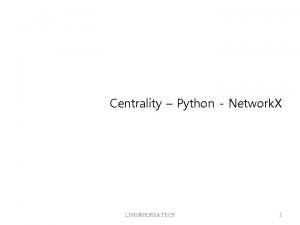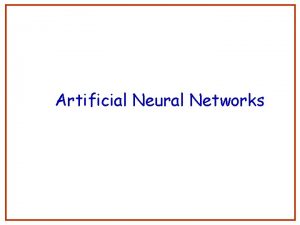Computing Network Centrality Measures using Neural Networks Dvir












- Slides: 12

Computing Network Centrality Measures using Neural Networks Dvir Cohen, Matan Hugi, Zion Sofer Advisors: Prof. Aryeh Kontorovich, Dr. Rami Puzis, Prof. Lior Rokach 1

Introduction • Our goal is to compute node centrality in graphs using Neural Networks. • Our course of action was building a neural network that computes node centrality using vertex embedding methods. The neural network computed the centrality without any external supervision or direction. 2

Motivation In graph theory and network analysis, indicators of centrality identify the most important vertices within a graph. Applications include: • Finding the most influential person(s) in a social network. • Page. Rank – Google’s method for deciding which page is displayed first. • Key infrastructure nodes in the internet or urban networks. • Super spreaders of disease. • Predicting signaling behaviors in bottlenose dolphin groups. 3

Centrality Measures Centrality measures is a way to determine which nodes in the graph is the most “important”. There are several deterministic centrality measures including Degree Centrality, Eigenvector Centrality, Closeness Centrality and Betweenness Centrality. Which one is the most important one? 4

Centrality Measures limitations One of the reasons why so many centrality measures have been defined is because all of the measures have limitations. For example: in a simple analysis of who's most popular in a social network, prioritizing nodes by betweenness centrality could be misleading. Meanwhile, a lot of immunization strategies in analyses of epidemic spreading rely on immunizing nodes with high betweenness. In this circumstance, immunizing people based on their degree centrality could be sub-optimal. 5

Random Walks • 6

word 2 vec Word 2 vec is a group of related models that are used to produce word embeddings. These models are shallow, two-layer neural networks that are trained to reconstruct linguistic contexts of words. And so, the linear combination [king] – [man] + [woman] Will be equal (In high probability) to [queen] 7

Algorithm Flow Graph Random walks word 2 vec Centrality 8

Training the word 2 vec network ['Node 0 Node 8 Node 4 Node 8 Node 0 Node 8‘] ['Node 0 Node 8 Node 9 Node 6 Node 5 Node 9'] ['Node 3 Node 7 Node 9 Node 5'] ['Node 6 Node 9 Node 8 Node 9 Node 7 Node 5'] ['Node 9 Node 7 Node 5 Node 6 Node 5 Node 7'] 9

Learning the centrality of the nodes 0. 106 0. 025 0. 026 0. 076 0. 083 0. 090 0. 080 0. 154 0. 164 0. 192 10

Results We computed the correlation between the output vector generated from our algorithm with popular closeness measures computed on the same graph Pearson Name DMZ centrality closeness centrality betweenness centrality eigenvector centrality degree centrality Spearman linregress correlation p-value 1 0. 8798 0. 8443 0. 715 0. 7072 0 0. 0007 0. 0021 0. 0221 1 0. 9224 0. 8739 0. 8292 0. 7236 0 0. 0001 0. 0009 0. 003 0. 0179 1 0. 774 0. 7129 0. 5113 0. 5001 0 0. 3082 0. 0943 0. 2527 0. 3195 11

Conclusion 12
